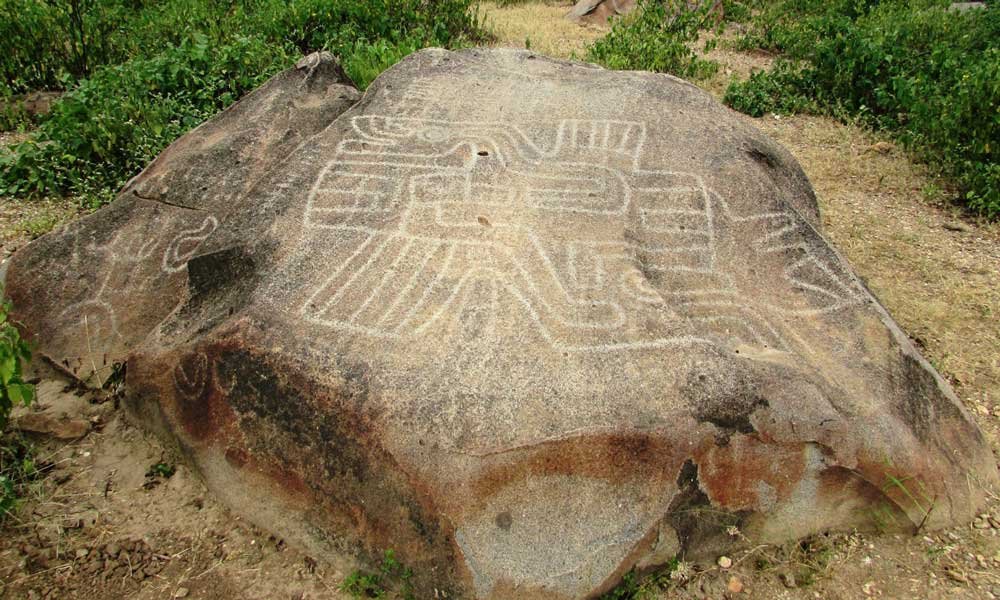Petroglyphs of Boliches and Pipochinos
The petroglyphs of Boliches and Pipochinos are important manifestations of rock art located in the region of Lambayeque, in northern Peru. These petroglyphs are engraved on rocks and represent diverse figures, such as human beings, animals, plants, geometric symbols and scenes of daily life.
It is believed that these petroglyphs were created by the ancient cultures that inhabited the area, such as the Lambayeque or Sicán culture, which flourished between the 8th and 14th centuries AD. These rock representations can have different purposes, from religious rituals to the documentation of historical events or the transmission of knowledge.
History
The history of the Boliches and Pipochinos petroglyphs dates back to ancient times when pre-Columbian cultures inhabited the northern region of Peru and left their marks on rocks through engravings. These petroglyphs serve as silent testimonies to the life and beliefs of these ancient civilizations.
The Lambayeque region, where these petroglyphs are located, was inhabited by various cultures throughout history. One of the most renowned is the Lambayeque or Sicán culture, which thrived between the 8th and 14th centuries AD. This culture was known for its metallurgical skills, complex irrigation systems, and artistry, including pottery production and the creation of petroglyphs.
The Boliches and Pipochinos petroglyphs were likely created by artists and craftsmen of the Lambayeque culture. These rock engravings may have served various purposes, such as artistic expression, documenting historical events, transmitting knowledge, or conducting religious rituals.
Over time, the significance of these petroglyphs has been recognized both locally and internationally. Archaeological studies have been conducted to better understand their meaning and historical context. Additionally, conservation measures have been implemented to protect these important relics from the past in the northern region of Peru. The Boliches and Pipochinos petroglyphs continue to be objects of study and interest for archaeologists, historians, and enthusiasts of pre-Columbian culture.

How to get to the Boliches and Pipochino petroglyphs?
To reach the Boliches and Pipochinos petroglyphs in the Lambayeque region of northern Peru, you typically follow a process that involves traveling to the nearest city and then making a short additional journey to the archaeological site. Here’s a general guide on how to get there:
- Travel to Lambayeque: The first step is to travel to the city of Lambayeque, which is the capital of the province of the same name. You can reach Lambayeque from other Peruvian cities, such as Chiclayo, which is the largest and nearest city. Chiclayo has an airport that offers flights from Lima and other major cities in Peru.
- Ground transportation: Once in Lambayeque, you can take ground transportation, such as a taxi, a colectivo (shared van), or a mototaxi, to head to the area where the Boliches and Pipochinos petroglyphs are located. It’s advisable to ask locals about the best way to get to the archaeological site, as they can provide updated information on routes and transportation options.
- Visit the archaeological site: Once in the petroglyphs area, you may need to walk a short distance from where the transportation drops you off to the actual archaeological site. You may need to pay an entrance fee to access the protected area where the petroglyphs are located.
It’s important to note that access conditions and transportation options may vary, so it’s always advisable to do additional research or ask local authorities before planning your visit. Additionally, it’s essential to respect conservation regulations when visiting archaeological sites to help preserve these important cultural heritage sites.













